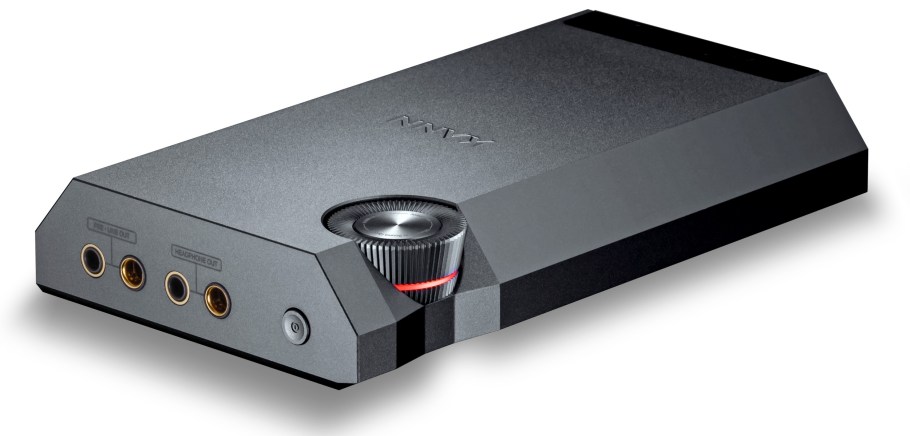Astell&Kern’s (A&Okay) HB1 Bluetooth DAC/amp has quite a lot of options that may endear it to followers of hi-res audio, but when these followers are additionally console players, it could possibly be much more engaging due to its help of USB Audio Class (UAC) 1.0 and its headset-friendly microphone compatibility. A&Okay has additionally introduced its newest high-end transportable media participant, the Kann Extremely, which affords an intriguing and versatile mixture of analog outputs. Each new merchandise might be accessible in November from choose A&Okay retailers. The HB1 has been priced at $259, whereas the Kann Extremely will promote for $1,599.
Astell&Kern HB1 Bluetooth DAC/amp

The HB1 is totally bursting on the seams with options. Along with being an ordinary hi-res DAC/amp for wired connections to telephones, tablets, and PCs, it additionally helps UAC 1.0 for wired use with sport consoles just like the PlayStation 5 and Nintendo Swap. Even though the newer UAC 2.0 has been round for years, these gaming machines proceed to depend on UAC 1.0, which few audiophile-grade DACs help.
This isn’t the primary time we’ve seen a dongle-style DAC/amp promote its UAC 1.0 compatibility — the not too long ago launched budget-priced Earfun EA100 has this function too (albeit with a clumsy mode change). Nevertheless, the $80 EA100 solely helps one-way audio from a UAC 1.0 console — nice for higher sound, however not useful for video games that require headsets. The HB1, however, helps voice audio in two methods: it has a built-in Knowles mic for folk who use in-ear displays (IEMs) with no inline cable mic (or who use the 4.4mm balanced output), and a 3.5mm jack that makes use of a four-pole, mic-compatible design for headsets or wired earbuds with inline mics.

So far as its common audio chops go, the HB1 is complete: due to its ESS ES9281AC PRO DAC, it helps native DSD256 and as much as 32-bit/384 kHz lossless audio, together with as much as 8x rendering of MQA tracks in the event you join the HB1 to an MQA-decoding gadget/app just like the Tidal shopper working on an iPhone or Android telephone. Talking of iPhone and Android, the HB1 comes with each USB-C-to-USB-C and a USB-C-to-Lightning adapter cables so you’ll be able to work with nearly any gadget and any platform. There’s additionally a companion app for each iOS and Android that allows you to configure a number of of the HB1’s settings.
It’s exhausting to not discover the large devoted quantity knob on the facet of the HB1. It’s been a stylistic cue of A&Okay’s transportable units for years. Nevertheless, we’re not completely positive if it is smart for a Bluetooth DAC that is perhaps shoved in a pocket or different locations the place that knob could possibly be inadvertently turned. We’re additionally a bit stunned that the HB1 doesn’t include a clip so you’ll be able to put on it on clothes — an particularly essential perform in the event you’re going to make use of it with the built-in mic we talked about.

By way of Bluetooth, you get help for Multipoint, so the the HB1 will be linked to 2 supply units concurrently, and there’s built-in hi-res audio codec compatibility with LDAC and aptX HD. Surprisingly, there’s no aptX Adaptive compatibility, a weird omission on condition that A&Okay is utilizing a Qualcomm Bluetooth chipset.
Cleverly, the HB1 will be configured to present Bluetooth precedence, so in the event you’re linked through USB and the DAC senses a brand new Bluetooth session, it’ll change mechanically. There are additionally choices for a way the DAC recharges through USB. Talking of that, battery life on the HB1 has been pegged at six hours in the event you use the three.5mm unbalanced port or 5.5 hours in the event you use the 4.4mm balanced port, at 50% quantity.
Astell&Kern Kann Extremely

The newest transportable media participant within the Kann household, the Extremely will look immediately acquainted to A&Okay followers, with its sharply angled sides and outsized quantity knob. What makes the Extremely stand out is the weird assortment of analog outputs — you get 4 in whole: 3.5mm unbalanced and 4.4mm balanced headphone outputs and combo preamp/line-out outputs.
The headphone jacks have 4 acquire presets and output that may go as excessive as 16Vrms — which ought to have the ability to drive even the best impedance headphones effortlessly. The preamp/line-out outputs run by means of a devoted preamplifier, letting you management the amount when in preamp mode or bypass the preamp utterly in line-out mode, with 4 mounted voltage ranges from 1.4V to 4V.

Why so many choices? The Extremely is designed for use with nearly any analog enter you’ll be able to consider, from high-end IEMs and wired headphones to stereo amplifiers, energetic audio system, and AV receivers. The intent is for folk to run all of their digital audio sources — whether or not they’re streaming music providers or audio recordsdata saved within the Extremely’s 128GB of onboard storage — by means of its top-of-the-line flagship DAC from ESS, the ESS9039MPRO, which is utilized in a dual-DAC configuration.
As you may guess, the ESS DAC is ready to decode nearly any digital supply, as much as lossless 32-bit/768kHz and DSD512. It’s additionally a full MQA decoder.

The Kann Extremely additionally gives options that had been launched on the A&Ultima SP3000, together with:
- Digital Audio Remaster Know-how (DAR), which upsamples the pattern price of the sound supply being performed, permitting extra refined play and “analog-like unique sound.”
- Crossfeed, which mixes elements of the unique sign from one channel and sends that sign to the other channel with a time distinction to heart the sound picture, like when listening with audio system. Settings resembling shelf cutoff, shelf acquire, and mixer stage, allow you to alter the extent of crossfeed.
- DAC Filter: seven DAC filters that allow you to fine-tune the sound.
- ReplayGain, which maintains a constant playback stage between tracks.
Editors’ Suggestions
